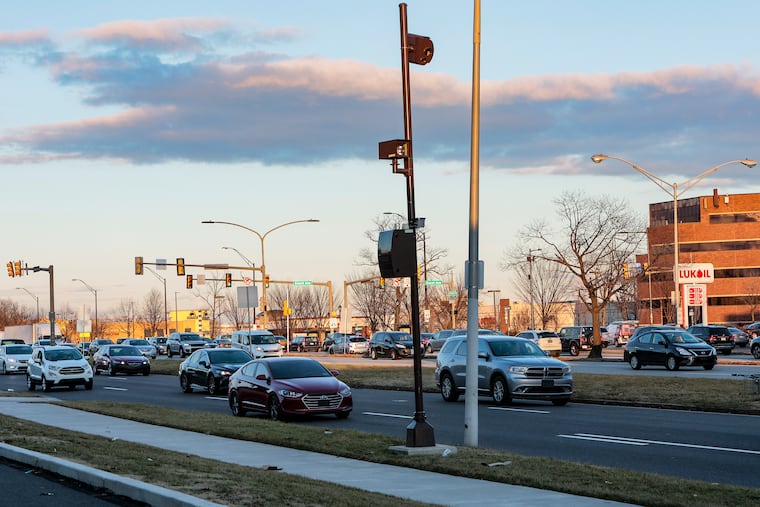Cars with missing or covered plates are foiling speed cameras on Roosevelt Blvd.
In the 26 months since speed-enforcement cameras were installed on Roosevelt Boulevard, average speeds and violations have dropped.

Over the last year, 30,630 vehicles caught speeding on Roosevelt Boulevard dodged tickets because the drivers were traveling without a license plate, according to the Philadelphia Parking Authority.
As a result, automated speed-enforcement cameras watching over one of the region’s most dangerous roads did not capture the data needed to send a ticket to the registered owner. PPA staff and city police officers who review potential violations had to reject them.
And 240 vehicles with no plates were clocked at 100 mph or more, the report said.
These revelations are contained in the PPA’s 2023 required annual report to the state legislature on the performance of the Roosevelt Boulevard speed-camera program, which will expire in December if the legislature does not renew it. The PPA manages the cameras.
Average speeds on the arterial roadway have dropped as have the number of speeding violations from last June through February, the latest report said — a sign the 40 speed cameras are influencing drivers’ behavior. Speeding has steadily dropped on the Boulevard since the first cameras were installed in June 2020.
A recent PennDot report found crashes declined on the Boulevard by 36% while dropping 6% in the rest of the city, based on a comparison of data from 2019, before the pandemic reduced traffic volume, and 2021.
PPA officials measured and reported the number of vehicles with no plates for the first time because the practice seems to be increasing in Philadelphia and other cities, along with deliberately obscured license plates.
“It’s a public safety program and it’s working, but folks are trying to get around the system,” said Rich Lazer, executive director of the PPA. “Regardless if there’s a camera or not, they’re covering any type of ID that will be able to help locate them.” He noted that drivers in regular overnight drag races on Packer and Pattison Avenues in South Philadelphia remove their plates or cover them.
An unknown number of speeding violations on Roosevelt Boulevard could not be processed because vehicles used false temporary license tags, officials said. PPA staff have also noticed more plates with covered numbers.
Casey Wech, the manager of red-light and speed-camera enforcement for the authority, said many of the three-wheel ATVs and motorcycles that thunder up and down the Boulevard use these detection-avoidance tactics.
“It can be anything from duct tape to electrical tape and white reflective tape,” Wech said. “There are some that just go the low route, which is plastic bags, towels, or pieces of cardboard over the top. I hate to bring it up, but on Amazon now you can buy ‘plate curtains’ where you hit a button and it covers your plate.”
An additional 4,302 cars without plates escaped getting violations for running a red light, the report said. The PPA also runs the camera system that enforces red-light violations around the city.
Deputy executive director Corinne O’Connor said the agency hasn’t figured out exactly why so many fewer plate-less vehicles were caught by the red-light cameras.
“The biggest thing on the Boulevard is it’s not like you’re driving on I-95,” O’Connor said. “You’re driving through neighborhoods where people actually live.” Speeding endangers pedestrians and residents waiting for buses, as well as other drivers and their passengers, she said.
Between June 2020 and November 2022, violations on Roosevelt fell 88.5%, the latest report says. Earlier reports showed a higher percentage rate of decrease in violations, but eight new cameras were added last June.